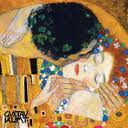Give Me A Little Kiss – Sex and the Historical Novelist
There is nothing new about sex. Birds do it, bees do it, and our ancestors most certainly did it (to butcher Cole Porter’s lyrics inexcusably).
What IS relatively new is the amount of sex appearing in “straight” historical fiction (I use this term to distinguish historical fiction from historical romance, not to imply that only heterosexual hanky-panky is included). If memory serves, the historical novels of my youth did a lot of fading-to-black. But somewhere between my decision to become a writer and my first book deal a shift occurred. Today there are plenty of sex scenes in straight historicals—some of them quite explicit. And sex seems to be a popular addition. For example, a video recorded at this year’s Historical Novel Society Conference during a popular event called “Late-Night Sex Scene Readings” (the reading of a scene from Gillian Bagwell’s The Darling Strumpet) has received over 6,000 hits on youtube since June.
Opinions on this trend vary. Here is mine: the inclusion of sex in historical novels is neither good nor bad in a vacuum. It’s not the sexual content that determines whether a particular scene works—it’s whether that scene (sex or otherwise) has a REASON for being in the novel. Tossing in an orgy (or even a kiss) into your work of historical fiction without a solid reason is a bad idea. The scene will feel “added on,” and gratuitous sex is no more acceptable in a novel than gratuitous dialogue.
So what can intimate scenes sometimes do well?
Forward the plot. Yep, just like any other sort of action a sex scene can move a novel’s plot forward. For example, one of my manuscripts includes the seduction of a royal courier for the purpose of getting a letter into his satchel. This letter is an important step on the path to the book’s central climax. So the sex scene (in a stable and pretty exciting in its own right, I might add) is vital to the forward motion of the novel.
Flesh out (sorry, I just HAD to) relationships between characters and/or give us emotional insights into characters. Sex, as we know from real life (or at least some of us know – no pressure on or disrespect to celibates reading this), is seldom merely a physical act. It has emotional ramifications, and can be a language all its own. So, a sex scene in a novel (whether vague or graphic) can be effectively used to give readers a sense of how characters relate to each other. For example, in my debut novel, The Sister Queens, readers learn a tremendous amount about one of my female characters and her relationships with two separate men simply by the contrast between her sexual experiences with each.
Help set the story firmly in its historical period. Sexual politics, mores, and practices change over time. For example, in certain periods, a man’s dominion over his wife’s body was complete – there was no such thing as rape between a man and his wife. Likewise, for hundreds of years sex (seduction, withholding of, etc) was one of the few tools available to a woman seeking power or influence. While today we would surely condemn a man for taking his wife by force and likely censure a woman for using sex to get ahead, seeing either such event a depicted in a historical novel reminds readers of the realities of the past and of our characters’ lives.
Beyond raising large issues of this sort, the inclusion of period details pertaining to sex—the acceptable positions for intercourse, its prohibition on certain days, the forms of birth control that were or were not available—can help build the “historical world” of the novel just as the inclusion of other period details can. In my novel frequent reference is made to payment of the “marriage debt,” and one of my female protagonists feels wronged when her husband spurns intercourse with her. As a matter of history she was entitled to feel gypped because, under the doctrine of the medieval Church, a married man was obliged, under penalty of mortal sin, to give his wife sex as a preventative measure against temptation to sins like fornication and adultery.
Give the reader a thrill. Yep, this one is legitimate too. But wait, Sophie, you are thinking, “you wrote five paragraphs ago that gratuitous sex is not acceptable.” Since when, dear writer, is giving the reader a bit of fun gratuitous? Meeting the needs of the reader is our business. We meet needs for escape. We meet emotional needs. We help readers wrestle with difficult questions in their lives. For heaven’s sake why should meeting readers’ needs for a bit of titillation be off the table? And why should meeting that need be solely the province of historical romance? Plenty of contemporary novels—from thrillers to literary fiction—include sex. I believe that writers working anywhere along the historical genre continuum should feel free to include intimate moments as well.
What do you think? Would you prefer to see explicit sex kept for historical romances alone? Can the inclusion of sex in a straight historical novels can be a positive addition?